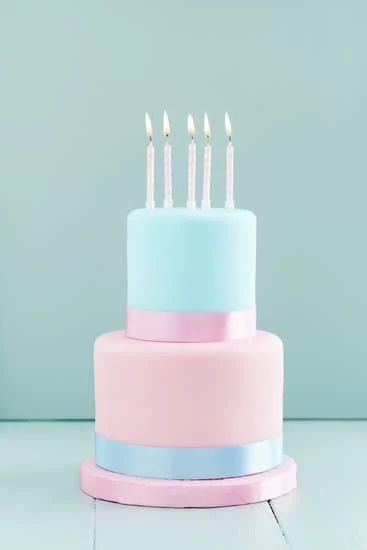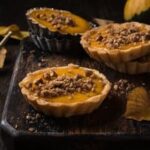What icing do you use to decorate a cake? The choice of icing plays a crucial role in enhancing the appearance and taste of a cake. Whether you’re aiming for a simple and elegant design or an elaborate masterpiece, selecting the right icing can make all the difference. In this article, we will explore the various types of icing commonly used for decorating cakes, providing an overview of their characteristics and best practices for using them creatively.
When it comes to cake decoration, the type of icing you choose can significantly impact the overall look and feel of your creation. From buttercream to royal icing, fondant to cream cheese icing, each variety offers unique properties and benefits for different decorating techniques. Understanding these options and how to effectively utilize them can elevate your cakes from ordinary to extraordinary.
As we delve into the world of cake decoration with different types of icing, we will explore the ingredients, techniques, and tips for using buttercream, royal icing, fondant, cream cheese icing, glaze icing, as well as vegan and allergen-friendly alternatives. By gaining insight into these various options, you’ll be better equipped to make informed decisions when selecting the perfect icing for your next baking project.
So let’s embark on this sweet journey into the art of choosing the right icing for cake decoration.
Types of Icing Commonly Used for Decorating Cakes
Introduction: Exploring the World of Cake Decorating Icings
Choosing the right icing for cake decoration is a crucial aspect of creating a visually stunning and delicious dessert. With a variety of options available, each type of icing brings its own unique flavor, texture, and decorating abilities to the table. Whether you’re aiming for intricate designs, smooth finishes, or playful decorations, understanding the different types of icing commonly used for decorating cakes can help you achieve your desired look and taste.
Buttercream Icing: A Classic Choice With Versatile Applications
Buttercream icing is a popular choice for cake decorators due to its creamy texture, rich flavor, and versatility. Made from butter, powdered sugar, and often vanilla extract or other flavorings, buttercream can be easily tinted with food coloring to achieve vibrant hues for decorating cakes.
Its smooth consistency makes it ideal for piping borders, flowers, and intricate designs on cakes. For those looking to create a cake with a soft and fluffy appearance, buttercream icing is an excellent option that pairs well with various cake flavors.
Royal Icing: The Regal Choice for Intricate Designs
Royal icing is another common choice for cake decorators who desire a firm and glossy finish on their creations. Made from powdered sugar, egg whites or meringue powder, and water, royal icing dries to a hard consistency that is perfect for intricate details like lacework, filigree designs, or delicate ornaments on cakes.
Its ability to hold its shape well once set makes royal icing a top pick for decorative elements that require precision and durability. Whether you’re decorating wedding cakes or intricate gingerbread houses, royal icing offers a sophisticated touch to any confectionery masterpiece.
Fondant Icing: Unleashing Your Creative Freedom With Sculptural Potential
Fondant icing has gained popularity in recent years among cake decorators for its smooth finish and sculptural possibilities. Made from sugar, water, gelatin or agar agar (for vegan options), fondant is rolled out into thin sheets that can be draped over cakes to create seamless coverings.
Fondant allows decorators to achieve sharp edges on cakes while providing a blank canvas for elaborate decorations like 3D figures, ruffles, bows, or textured details. While fondant may not be everyone’s favorite in terms of taste due to its sweet nature and chewy texture, its visual appeal and versatility in design make it an essential tool in the world of cake decoration.
Buttercream Icing
When using buttercream icing for cake decoration, it’s important to prepare the consistency correctly. For spreading onto the cake surface, a slightly thinner consistency works best to ensure smooth coverage. If you’re looking to pipe decorations such as borders or flowers, a stiffer consistency is recommended to hold its shape. Adding too much liquid can cause the buttercream to become runny, so it’s essential to gradually incorporate milk or cream until reaching the desired texture.
One tip for using buttercream icing is to let the cake layers cool completely before applying the frosting. This helps prevent the icing from melting or sliding off the cake. Additionally, chilling the cake after crumb coating it with a thin layer of buttercream can make it easier to add another layer of frosting without mixing in crumbs.
Experimenting with different piping tips and techniques can also elevate the look of your cake decorations when using buttercream icing. Overall, this versatile icing option provides endless possibilities for creating beautiful and tasty treats for any occasion.
Royal Icing
To make royal icing, simply whisk together confectioners’ sugar and beaten egg whites until the mixture reaches the desired consistency. For a more stable icing that dries quickly, you can add a touch of lemon juice or cream of tartar. The beauty of royal icing lies in its ability to be piped into intricate designs that hold their shape once hardened. It also acts as an edible glue for assembling gingerbread houses or attaching decorations to cakes.
In cake decorating, royal icing is commonly used for outlining shapes on cakes, creating delicate lace patterns, writing messages or names on desserts, and making elaborate decorations like flowers or figures that can stand upright on top of cakes. Its smooth finish provides a professional look to any baked creation, and it allows for endless creativity in design possibilities.
Whether you are a novice baker or an experienced cake decorator, mastering the art of working with royal icing can elevate your creations to the next level.
| Royal Icing Properties | Uses in Cake Decorating |
|---|---|
| Dries hard for stable structures | Outlining shapes on cakes |
| Smooth finish once dried | Creating delicate lace patterns |
| Edible glue for assembling decorations | Making elaborate decorations like flowers or figures on cakes |
Fondant Icing
Despite its many benefits, fondant does have some drawbacks that should be considered. One of the common complaints about fondant is its taste, as some people find it overly sweet or lacking in flavor compared to other types of icing.
Another challenge when working with fondant is that it can dry out quickly, making it prone to cracking or tearing if not handled correctly. However, with practice and proper technique, decorators can overcome these issues and achieve stunning results with fondant.
When using fondant for cake decoration, there are several techniques that can help ensure a successful outcome. It is important to knead the fondant until it is pliable and smooth before rolling it out to cover the cake. To prevent sticking, dust your work surface with powdered sugar or cornstarch while rolling out the fondant.
When applying the fondant to the cake, gently smooth out any air bubbles or wrinkles using a smoothing tool or your hands. For more advanced decorations such as figurines or flowers made from fondant, consider using molds or cutters for precise shapes.
In terms of creative ways to decorate cakes with fondant, the possibilities are endless. Fondant can be sculpted into three-dimensional shapes, molded into intricate patterns, or used as a canvas for painting edible designs.
With a little imagination and practice, decorators can transform plain cakes into works of art using fondant icing. Whether you’re looking to create a whimsical birthday cake or an elegant wedding cake, fondant offers endless possibilities for bringing your vision to life in delicious detail.
Cream Cheese Icing
When it comes to cream cheese icing, there are various flavor variations that you can explore to suit different types of cakes and personal preferences. Some common variations include adding vanilla extract for a classic flavor profile, mixing in lemon zest for a zesty kick, or incorporating cocoa powder for a chocolatey twist. These flavor enhancements can elevate the taste of your cakes and provide an extra layer of complexity that will delight your taste buds.
To make the most out of cream cheese icing for cake decoration, it is important to follow some best practices to ensure that your creations turn out beautifully. Here are some tips for using cream cheese icing effectively:
- Make sure the cream cheese and butter are at room temperature before mixing to achieve a smooth consistency.
- Avoid overmixing the icing as it can become too thin or lose its thickness.
- If necessary, refrigerate the icing before piping or spreading it on the cake to firm it up for better control.
By mastering these techniques and experimenting with different flavor combinations, you can create stunning cakes with cream cheese icing that will impress any crowd. The versatility and indulgent taste of this type of icing make it a go-to option for both casual bakers and professional pastry chefs looking to add a special touch to their sweet creations.
Glaze Icing
To make glaze icing, you will typically need just a few basic ingredients such as powdered sugar, liquid (water, milk, juice), and sometimes flavorings like vanilla extract or citrus zest for additional flavor. The key to achieving the perfect consistency for glaze icing is in finding the right balance between sugar and liquid – too thick, and it won’t spread easily; too thin, and it will run off the sides of your cake.
Once you have mastered the basic recipe, you can experiment with different colors by adding food coloring or natural dyes to create stunning visual effects.
When using glaze icing for cake decoration, it’s important to work quickly but carefully. Start by pouring a generous amount of the glaze over the top of your cake or pastry, gently spreading it towards the edges with an offset spatula or spoon. Allow the glaze to set before adding any further decorations or designs on top.
For added flair, you can drizzle multiple colors of glaze over each other or use a toothpick to create intricate patterns on the surface. With practice and creativity, glaze icing can elevate your baking projects to new heights of visual appeal and delight your taste buds at the same time.
Vegan and Allergen-Friendly Icing Options
Plant-Based Icing
One of the most common vegan icing options is plant-based buttercream. This type of icing is typically made with dairy-free butter or margarine, powdered sugar, and flavorings like vanilla extract. Plant-based buttercream can be easily colored and piped onto cakes to create intricate designs.
Additionally, it can be flavored with different extracts or citrus zests to add depth to the taste. Vegan ganache made with dairy-free chocolate and coconut cream is another decadent option for those looking for a rich and creamy frosting alternative.
Allergy-Friendly Icing
For individuals with food allergies, allergen-friendly icing options are crucial for enjoying decorative cakes safely. Ingredients like soy, nuts, gluten, and dairy are common allergens that can be present in traditional icing recipes. Allergen-friendly icings use substitutions such as coconut milk, sunflower seed butter, or gluten-free flour to achieve the desired consistency without compromising on flavor or texture. These alternatives allow everyone to indulge in beautifully adorned cakes without having to worry about allergic reactions.
Tips for Using Vegan and Allergen-Friendly Icings
When working with plant-based or allergy-friendly icings, it’s essential to follow specific tips to ensure successful cake decoration. Keep in mind that these icings may have slightly different consistencies compared to traditional versions due to ingredient substitutions. Adjusting the amount of liquid or sugar in the recipe can help achieve the desired texture for piping or spreading on cakes.
Additionally, refrigerating plant-based icings before decorating can make them more manageable and less prone to melting at room temperature. Experimenting with different flavor combinations and techniques will allow you to customize your vegan or allergen-friendly icing creations for stunning cake decorations that cater to various dietary needs.
Conclusion
In conclusion, choosing the right icing for cake decoration can truly make a significant difference in the overall appearance and taste of your baked creations. With a variety of options available, from buttercream to royal icing, fondant to cream cheese icing, and glaze icing to vegan and allergen-friendly alternatives, there is something for every type of baker and every occasion.
Each type of icing brings its own unique characteristics and techniques that can elevate the look and flavor of your cakes.
Whether you are looking for a smooth and creamy finish like buttercream, intricate designs with royal icing, perfectly sculpted decorations with fondant, or a tangy twist with cream cheese icing, it is essential to understand the properties and best practices associated with each type of icing. Experimenting with different textures, flavors, and decorating techniques can help you discover your signature style and create stunning cakes that are not only visually appealing but also delicious.
Ultimately, the key to successful cake decoration lies in selecting an icing that complements your cake design while reflecting your personal taste preferences. So the next time you ask yourself: “What icing do you use to decorate a cake?” remember to consider the theme of your event, the desired aesthetic appeal, and most importantly, have fun exploring the endless creative possibilities that different icings offer for making unforgettable desserts.
Frequently Asked Questions
Is Frosting or Buttercream Better for Cake Decorating?
Frosting and buttercream both have distinct qualities that make them better suited for different cake decorating purposes. Frosting is typically lighter and fluffier, making it ideal for creating smooth finishes and intricate designs.
On the other hand, buttercream is richer and creamier, providing a more decadent taste and texture to cakes. Ultimately, the choice between frosting and buttercream comes down to personal preference and the specific aesthetics you want to achieve in your cake decorating.
Which Frosting Is Best for Beginners?
For beginners in cake decorating, a simple American buttercream frosting may be the best option. This type of frosting is easy to make with just a few basic ingredients like butter, powdered sugar, vanilla extract, and milk.
Its forgiving nature allows beginners to practice piping techniques without worrying too much about precise measurements or perfect consistency. Additionally, American buttercream can be flavored and colored in various ways to add creativity to your cake designs.
What Is the Difference Between Frosting and Icing?
The main difference between frosting and icing lies in their composition and texture. Frosting tends to be thicker, creamier, and fluffier than icing, making it ideal for spreading or piping onto cakes to create decorative finishes or elaborate designs.
Icing, on the other hand, is thinner and glossier in consistency, often used for glazing pastries or cookies. While both terms are often used interchangeably in everyday language, understanding the subtle differences can help you choose the right topping for your baked creations based on desired aesthetics and textures.

Welcome to our cake decorating blog! My name is Destiny Flores, and I am the proud owner of a cake decorating business named Cake Karma. Our mission is to provide delicious, beautiful cakes for all occasions. We specialize in creating custom cakes that are tailored specifically to each customer’s individual needs and tastes.





